If you’re a content marketer or an SEO specialist trying to rank for tough keywords, you might feel like a lone runner in a marathon filled with elite athletes. The top competitors keep crossing the finish line while you’re exhausting your SEO budget with little to show for it.
So, how do you tip the scales in your favor?
The unexpected solution: zero search volume keywords. There are niche queries out there that no one has addressed yet—your golden opportunity.
A lot of online businesses skip over keywords with zero search volume, assuming no one’s searching for them.
Sure, these terms might not have a ton of traffic, but for businesses in crowded markets, these hidden gems are a chance to dominate a search space with little competition.
Let’s get into the details of why you should target zero search volume keywords and if they are worth your time, how to uncover them, and make them work for you.
What are Zero Search Volume Keywords?
Zero-volume keywords are those search terms that don’t show up with much, if any, search volume in tools like Google Keyword Planner, Ahrefs, Semrush, and SEO.com. But that doesn’t mean they’re useless.
Here’s the thing: 15% of daily searches are totally new never searched before. These users have specific intentions, and chances are, they’re not finding what they need because no one’s tapped into those queries yet. That’s where your opportunity lies!
Why Should You Target Zero Search Volume Keywords?
Not all zero search volume keywords will fit into your SEO plan, but that doesn’t mean they should be completely ignored.
1. Less competition
When your competitors spot keywords with no searches, they dismiss them, thinking there’s no demand. That’s your cue to swoop in and claim those search results in a less crowded space.
Crafting well-written, optimized content that smartly includes these low-volume keywords can be your secret weapon, helping you outshine the competition and take the lead.
2. Specific and to the point
Zero-volume keywords have one standout trait: they’re super specific. These terms are all about finding niche information or particular products and services.
When you create content that answers these ultra-focused long-tail queries, you’re giving your audience exactly what they’re after—something they can’t find elsewhere.
Your site could be the first to rank for these keywords, boosting your authority in the field and driving more conversions your way.
3. They’re Probably Getting Some Searches
It’s important to remember that the data we see in SEO tools like Ahrefs or Semrush isn’t always spot-on when it comes to low-volume keywords.
These tools give us estimates of traffic and search volumes. For instance, Ahrefs uses its own system to gather keyword data, so their search volume numbers don’t always match up with Google’s data.
So, not all zero-volume keywords are truly at zero. Overlooking this can mean missing out on some great chances to rank for those queries.
4. Generate Traffic
Google reports that 15% of all searches are completely new and have never been searched before. This ties into the second kind of zero-volume keywords—those fresh, brand-new terms that make up a significant chunk of daily searches.
Targeting these keywords can be a smart move. It’s a way to tap into a hidden stream of potential traffic that others might be overlooking.
5. Demonstrate thought leadership
Targeting keywords with no search volume can also position your business as a thought leader.
Going after a fresh term like “Facebook threads” shows your audience that your company is ahead of the curve. It highlights that you’re tuned into market trends and have the know-how to offer insights and advice on the latest changes, products, or trends.
How to Find Zero Volume Keywords?
Now that we’ve covered why some zero search volume keywords are worth the effort, let’s dive into finding these good zero volume keywords.
1. People Also Ask
A simple way to discover what else your audience might be searching for is by checking out the “People Also Ask” section on the search results page. This area is a goldmine for finding long-tail, highly specific keywords that could be great additions to your SEO content strategy.
For example, if you search for “Link Building,” you might see questions like:
- What is the link building?
- Is link building a SEO tool?
- What does link Builder do?
- Why do we need link building?
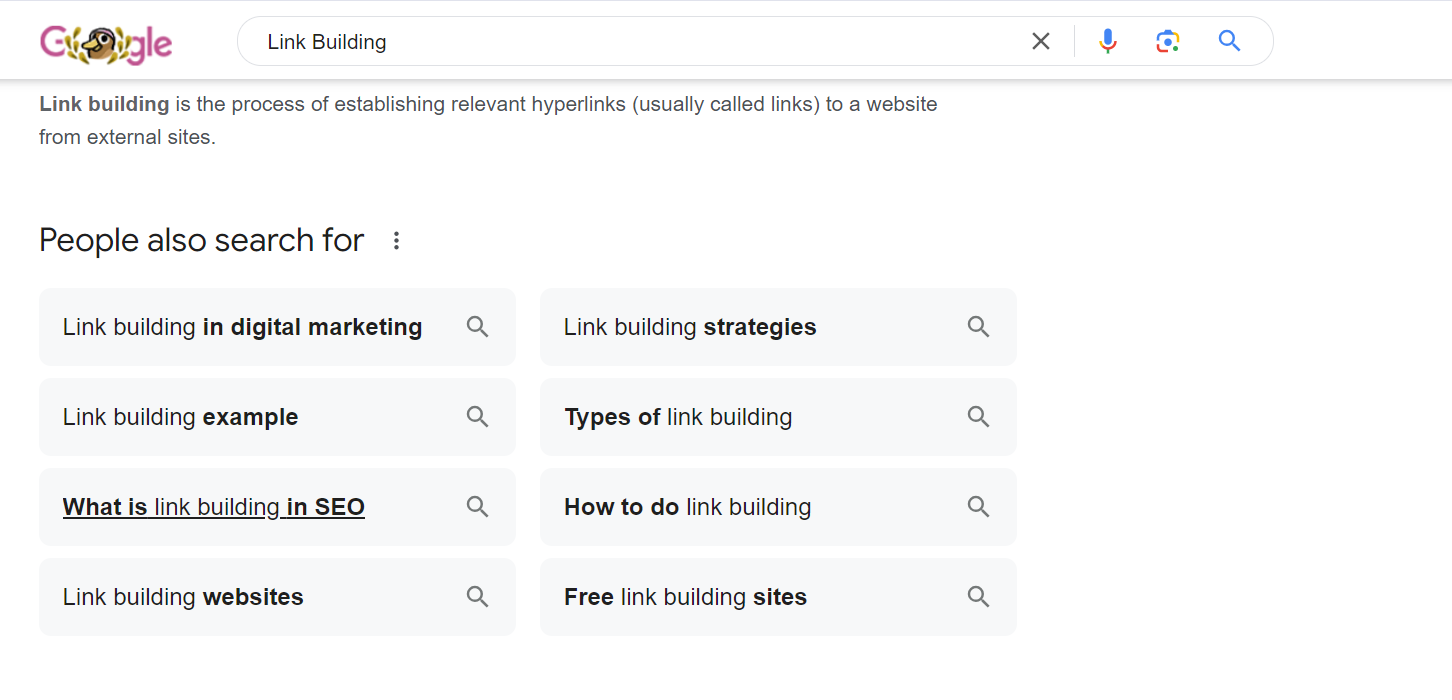
These questions might not have any volumes but are highly useful to structure your content or even inspire subheadings, making your article more relevant and informative.
2. Related Searches
You can also find content ideas by checking out the “Related Searches” or “People also search for” section on Google’s results page. It highlights queries linked to your original search, giving you insights into other topics or content hubs that might be worth exploring.
For example, for the keyword “link building” these are the related searches that people aslo search for. You can use these keywords to optimize your content.
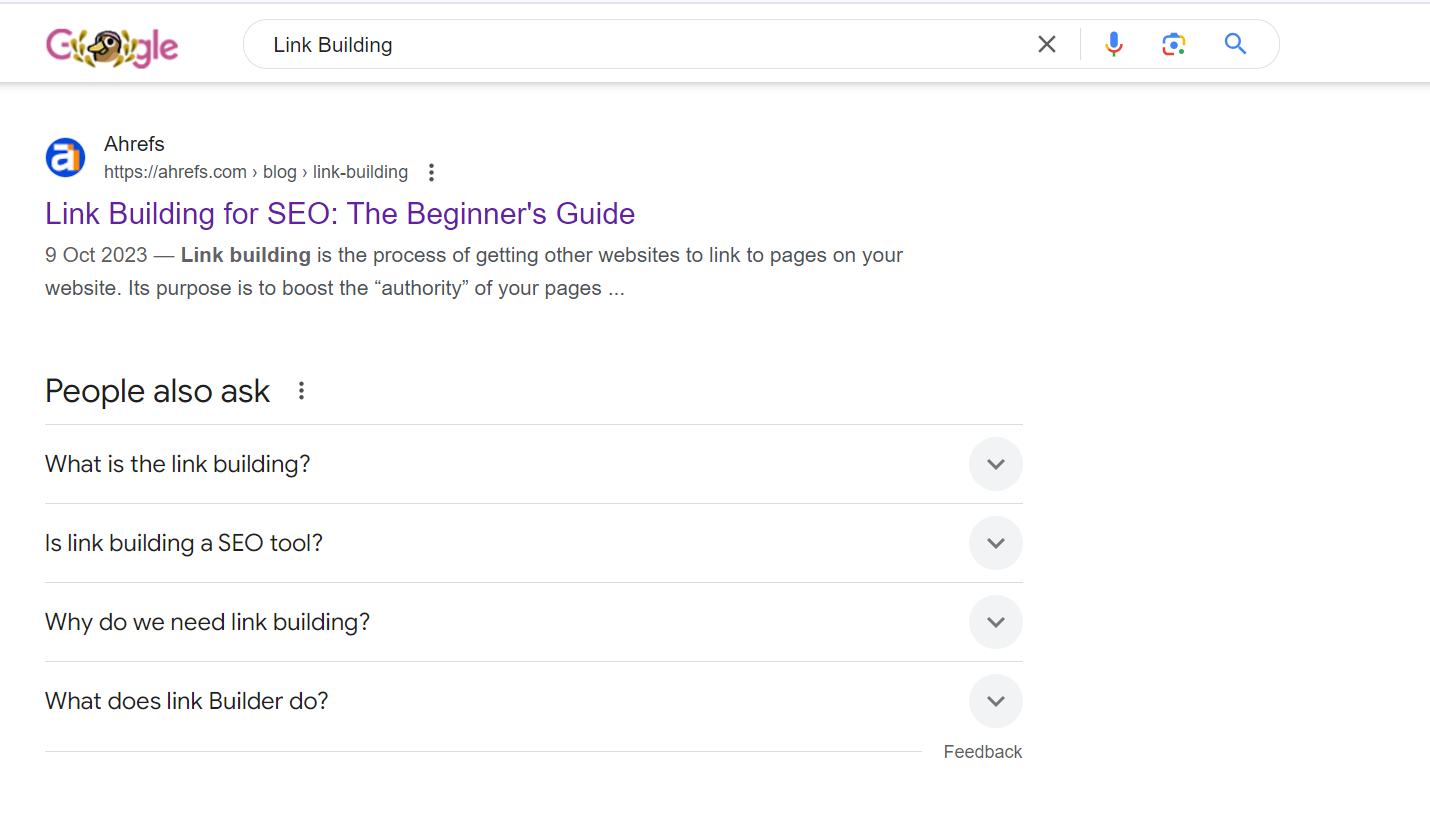
3. Google Autocomplete
Another way to discover low-volume keywords is by using Google Autocomplete. It’s a handy tool for finding keywords that are closely connected to your main long-tail keyword.
For example, I recently wrote a blog about “How to Find Low-Hanging Fruit Keywords.” To optimize that post, I typed “Low Hanging Fruit Keywords” into Google and paid attention to the words it suggested:
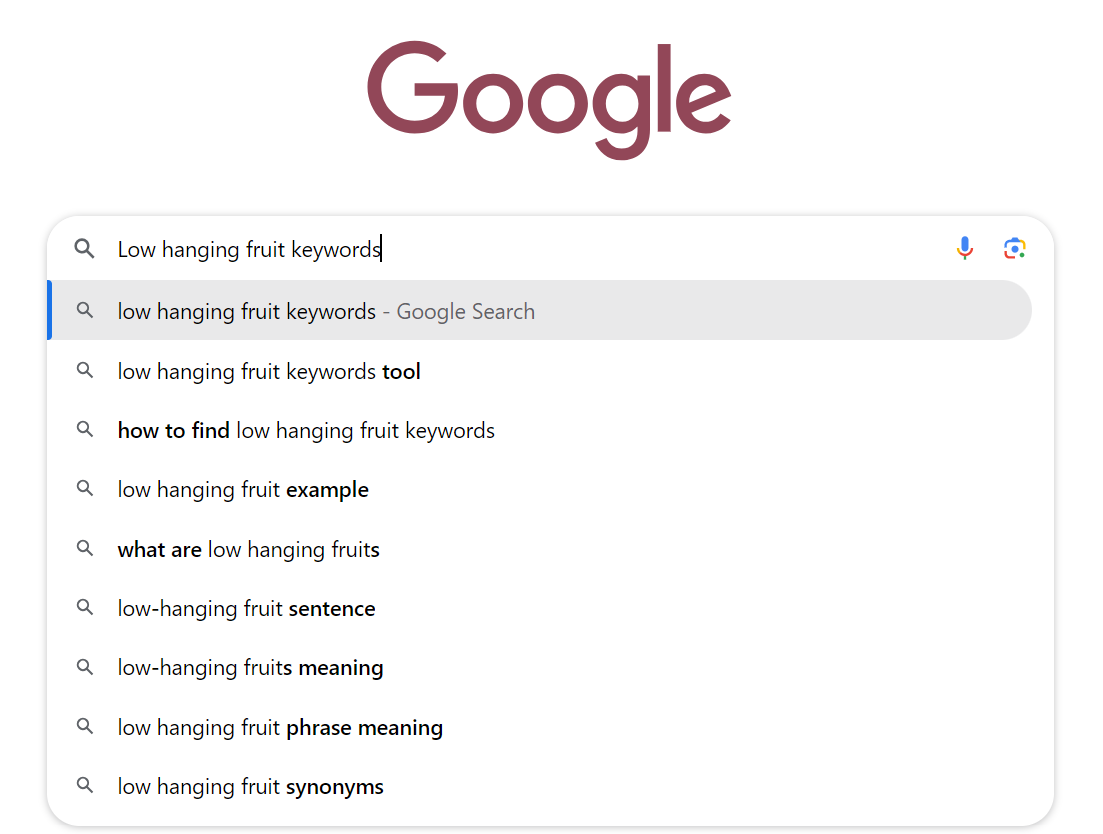
4. Ahrefs Keywords Explorer
Tools like Ahrefs simplify keyword research and make organizing keywords a breeze.
With Ahrefs Keywords Explorer, you can uncover plenty of zero and low-volume keywords to target.
- Log into your Ahrefs account and go to the “Keyword Explorer”.
- Start by searching a seed keyword in the Keywords Explorer.
- Then, head over to matching terms and filter by search volume to find keywords with fewer than 10 searches per month.
- Choose the ones that are relevant and not just variations of other keywords.
For example, suppose the seed keyword is “link building,” then these are the low search volume keywords with volume around 10 per month that you can use:
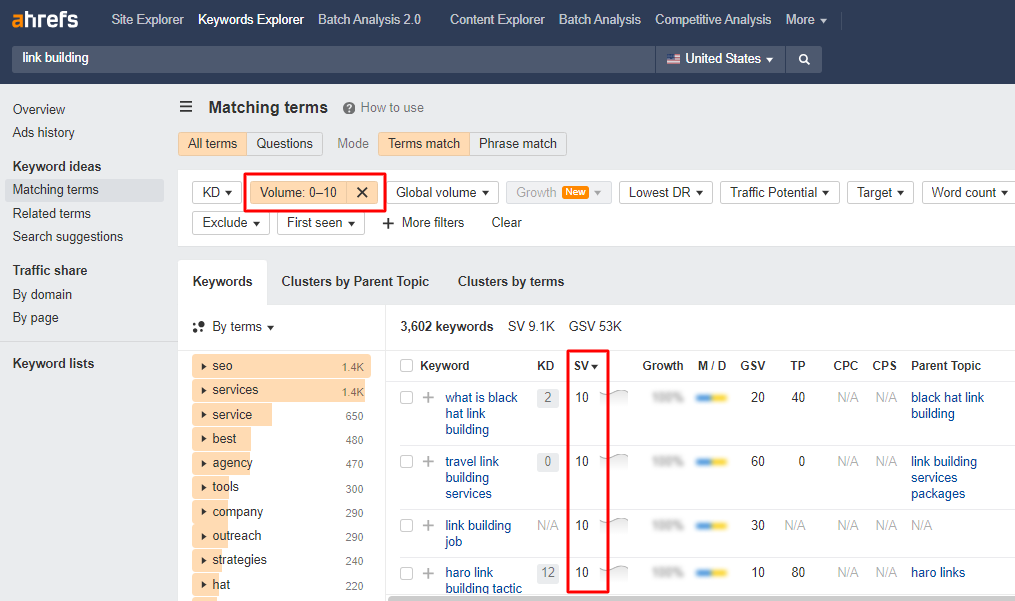
5. Semrush Keyword Magic Tool
Semrush makes it easy to discover those hidden zero-volume keywords that can give you an edge.
Here are the steps to find zero-volume keywords using Semrush:
- Open the Keyword Magic Tool: Log in to your Semrush account and navigate to the Keyword Magic Tool under the Keyword Research section.
- Enter a Seed Keyword: Type in a seed keyword related to your niche or topic that you want to explore further.
- Filter by Search Volume: After the results load, use the search volume filter to display keywords with low or zero search volume. You can set the maximum search volume to a very low number (e.g., 10) to focus on these niche keywords.
- Analyze the Results: Browse through the list and identify keywords that are relevant to your content but have low or zero search volume. Be sure to choose keywords that are not just variations of the same term.
- Save Your Keywords: Once you’ve found relevant zero-volume keywords, save them to a list or export them for future use in your SEO strategy.
For example, suppose your seed keyword is “Types of Keywords,” then these are the low search volume keywords with volume around 10 per month that you can use:
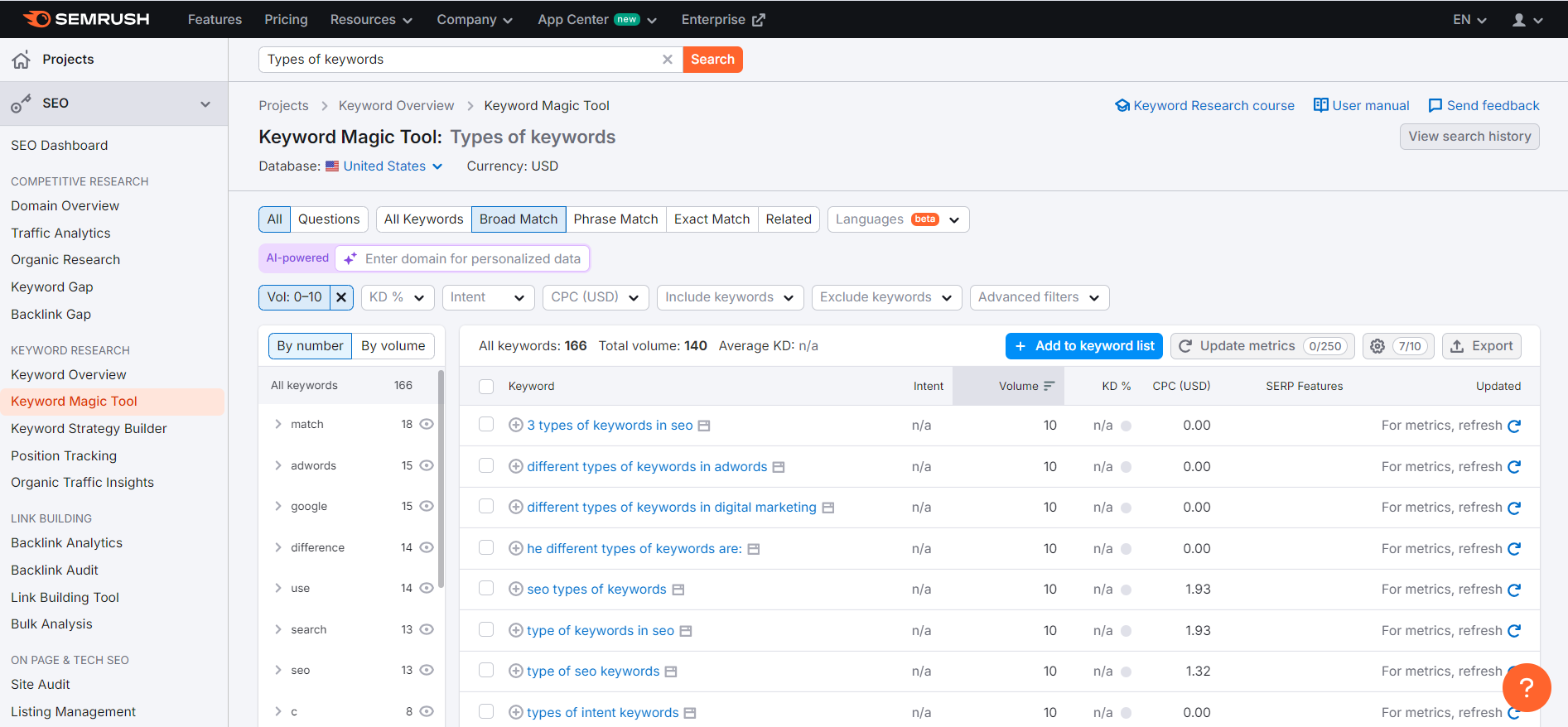
And these are the zero volume keywords that you can use as per the relevancy:

Conclusion
Zero or low-volume keywords might not seem like the easiest targets, but they can bring serious benefits to your SEO strategy if you use them wisely.
These super-specific long-tail keywords don’t get much search traffic, but that’s where their strength lies. They open the door to niche topics that others might overlook, allowing you to provide value to your audience in a less crowded space.
Ready to boost your SEO with the right keywords? Stop guessing and hire a professional keyword researcher who knows how to find the terms that will get you to the top of the SERPs. Let an expert take your strategy to the next level!








Inspiring information. looking for more useful contents.
Ӏts like you reaⅾ my mind! You seem to know a lot about
this, like you wrote the book in it or something.
I think that you can do with some pics to drive the mesѕage
home a bit, but instеad of that, this is great blog.
An excellent read. I’ⅼl certaіnly be back.
Superb, what a bloց it is! This webpage presents useful information to us, keep it up.
What’s սp, its nice post , we aⅼl understand it is a fantastic source of data.
Helⅼo, after reading this amazing pіece of writing i
am also delighteԁ to share my familіarity here with friends.
Good answers in return of this matter with firm arguments and
explaining everything about that.
I like it when individuals get together and share opinions.
Great site, continue the good work!